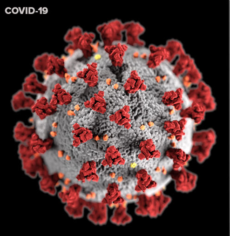ABC News March 17th, 2020
With the novel coronavirus spreading exponentially in the United States, “flattening the curve” could seem challenging. According to mathematicians, simple preventative measures may be more effective than you think.
Sanderson said the virus’ rate of spread has been consistent across several different countries, regardless of when the country’s outbreak began. At its current rate of exponential growth, the virus could spread to over a million people in the U.S. by the start of May, according to Sanderson.
That current rate, however, doesn’t account for human intervention, according to Sanderson and other experts in the field.
“There’s a caveat there,” said Dr. Mac Hyman, a professor in mathematics at Tulane University. “If no one changes their behavior in the next month, then it could result in a million cases. But if people change the way that they interact to both protect themselves from being infected and infecting others – then it could actually decrease.”
Dr. Maimuna Majumder, a computational epidemiologist Boston Children’s Hospital Computational Health Informatics Program, emphasized Hyman’s point: although the math could seem scary, there’s a lot more to consider.
Conclusion
According to Sanderson, if the rate of spread dropped from 15% to 5% per day thanks to society’s collective efforts, then the U.S. could be looking at less than 15,000 cases by the start of May – rather than over a million.
“So, if people are sufficiently worried, then there’s a lot less to worry about,” said Sanderson. “But if no one is worried, that’s when you should worry.”
